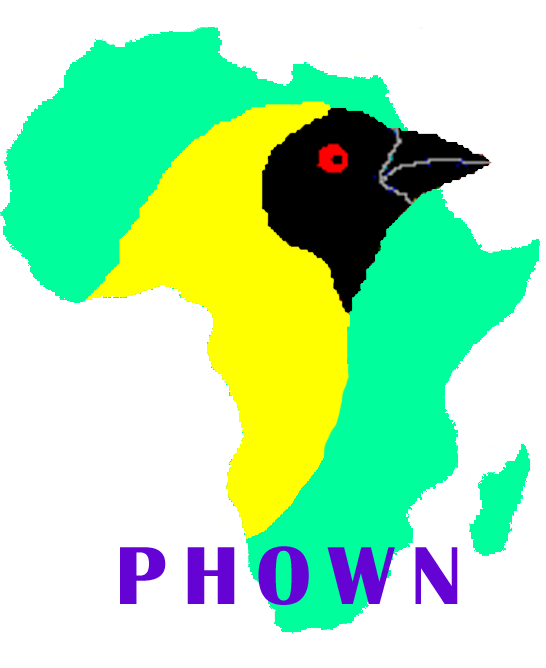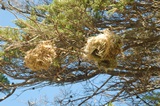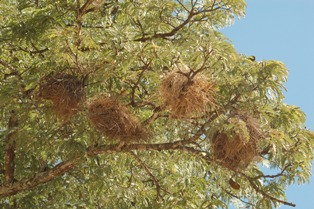Weaver news
|
For most weavers the basic breeding factors are known, i.e. breeding season, clutch size, incubation and fledgling periods. One of the least known breeding factors, and yet one of the easiest to collect, is colony size. The reason for this is that colony sizes vary, particularly in polygnous species. Colony size is important as a determinant of breeding success; males with more nests attract more females and have a higher breeding success - there is evidence for this in at least Southern Red Bishops, Cape Weavers, Village Weavers and Southern Masked Weavers, and this probably holds true for most polygnous weavers. Citizen scientists can help provide data on colony sizes by photographing weaver nests and submitting the records to PHOWN (Photos of Weaver Nests). PHOWN already has data on colony sizes for 33 weaver species: see here, and some of this data is new. For instance, the Handbook of the Birds of the World, Vol. 15 (HBW) is the most recently published summary of weaver information and it does not have any data on colony sizes for the White-browed Sparrow-Weaver. Data currently in PHOWN gives colony size for this species as 1-35 nests, mean 12.8 (n=60). Similarly, for the Lesser Masked Weaver, HBW says: "Colonial, up to 60 nests at a site", while PHOWN provides much improved information: 5-65 nests, mean 22.3, for 6 colonies. No species has enough data - more is needed to study variation in colony size geographically and in different years. Many weavers are monogamous and solitary but records of these are still valuable for studying other aspects of weaver breeding biology. To find out more about submitting records, read here. Records from long ago can be submitted if you have a photo, gps location, and date (nest count and other data is preferred but optional). |











